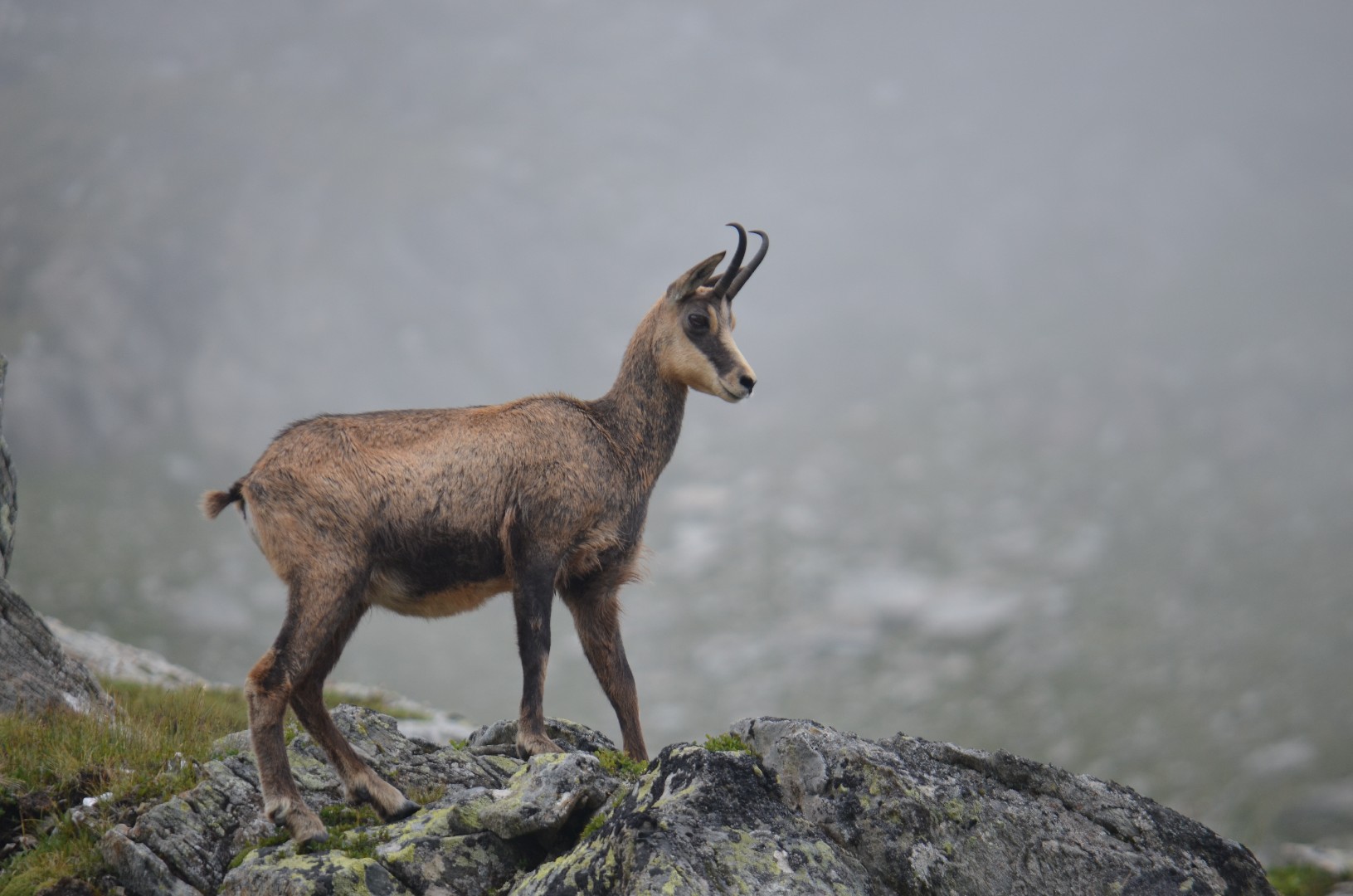Chamois
A species of Chamois, Also known as Northern chamois Scientific name : Rupicapra rupicapra Genus : Chamois
Chamois, A species of Chamois
Also known as:
Northern chamois
Scientific name: Rupicapra rupicapra
Genus: Chamois
Content
Description General Info
 Photo By Gailletboréal , used under CC-BY-SA-4.0 /Cropped and compressed from original
Photo By Gailletboréal , used under CC-BY-SA-4.0 /Cropped and compressed from original Description
The chamois is a very small bovid. A fully grown chamois reaches a height of 70–80 cm (28–31 in) and measures 107–137 cm (42–54 in) (the tail is not generally visible except when mating). Males, which weigh 30–60 kg (66–132 lb), are slightly larger than females, which weigh 25–45 kg (55–99 lb). Both males and females have short, straightish horns which are hooked backwards near the tip, the horn of the male being thicker. In summer, the fur has a rich brown colour which turns to a light grey in winter. Distinct characteristics are white contrasting marks on the sides of the head with pronounced black stripes below the eyes, a white rump and a black stripe along the back. 
General Info
Lifespan
15-20 years
Diet
Chamois sustains primarily by feeding on various herbs. They exhibit a meticulous feeding technique, using their delicate lips to select favored plant species such as fescue, clover, and alpine roses. Their diet is occasionally supplemented with lichens and occasionally, tree bark during harsh winters.
Appearance
Chamois is a medium-sized mammal with a solid build and short, dense fur, mainly grey-brown, but lighter underneath. It boasts distinctive black stripes on its face and a dark-colored backside. The species is characterized by long, curved back horns, especially prominent in males. Subspecies may vary in coloration and horn shape.
Behavior
Chamois displays a predominantly solitary existence, venturing to higher altitudes during summer and descending into valleys during winter, illustrating a clear migratory pattern. This species is adept at leaping and climbing steep mountainous terrain, a skillful adaptation for evading predators and surviving within its rough habitat.
Population
Stable